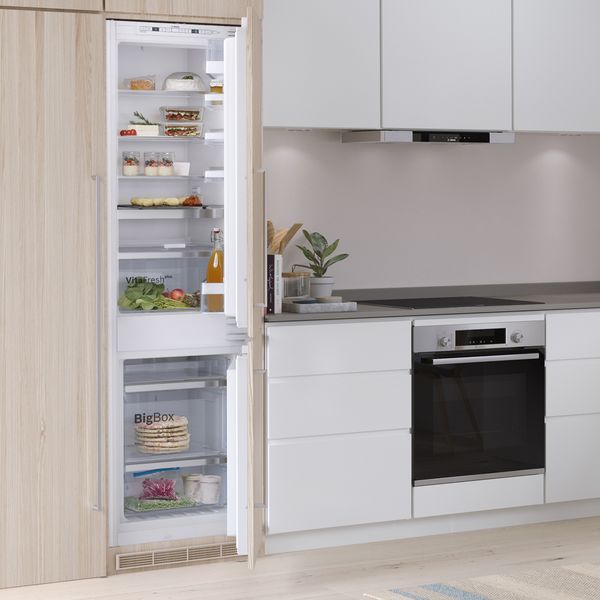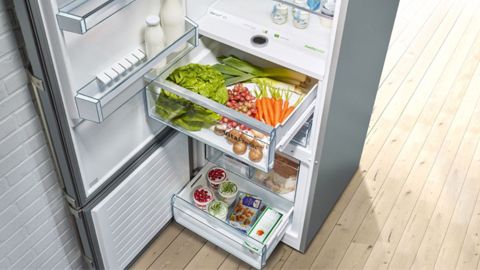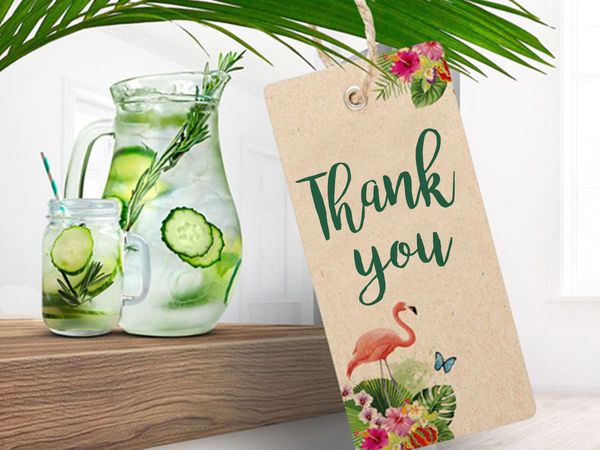How to Avoid Freezer Burn
Freezing food is an excellent way of making your grocery shopping go further and last longer. From cutting down on food waste to helping you prepare and plan meals in advance, your freezer is your best friend when it comes to saving time and money over the long term. However, there is one potential pitfall to watch out for – freezer burn.
Burning your food is probably the last thing you would expect to happen when you put it in the freezer, but this is a very different kind of burn. Naturally, this begs the question, what is freezer burn? Don’t worry, we’re about to tell you what it is, how and why it happens, and perhaps most importantly, how to avoid it.
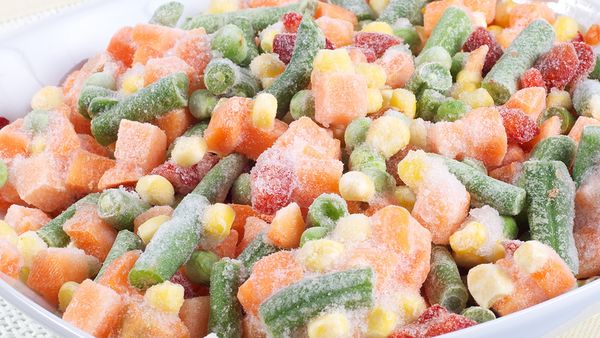
What is freezer burn?
When frozen food is exposed to the air, you may gradually notice ice crystals beginning to form on the surface. This is the result of water molecules within the food freezing, accelerated by the contact with the air. These frozen water molecules can rise to the surface over time, where they gather as crystals.
If your frozen food is covered in ice crystals, then this is a clear sign of freezer burn.
Essentially, the moisture that was inside your food is now coating the outside as accumulated ice, leaving your food dehydrated and discoloured. These colour and flavour changes mostly affect frozen meat and fish. Fruits and vegetables will also show apparent signs of being dry and shrivelled. Eventually, the excess ice crystals will migrate to the coldest part of your freezer, turning the whole thing into an overly frozen wasteland.
The scientific term for this process is known as sublimation which, like evaporation, involves a substance changing from one form to another. As fascinating as the science is, it’s not good news for your frozen food, which will be left dry and off-colour.
Any food is susceptible to freezer burn if left in the freezer for too long. Still, those with high water content like meat, fish, fruits, vegetables, and ice cream, are worst affected.
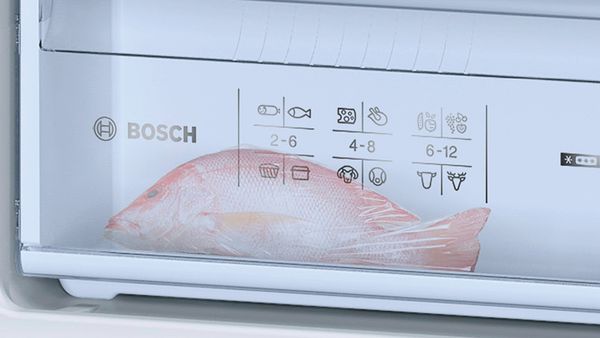
Causes of freezer burn
There are two leading causes of freezer burn, and both can be avoided once you understand them.
Exposure to air
Our first culprit is exposure to the air. This can happen if the packaging is open with air trapped inside, or if the food is stored in an unsuitable container.
Time in the freezer
The second cause to look out for is the length of time your food has been frozen. As a quick rule, the longer food is left frozen, the greater the chance of it developing freezer burn.
Other causes of freezer burn
There are also some less common causes to be aware of.
If your freezer is set at the wrong temperature
You leave the door ajar regularly
You open the door too often
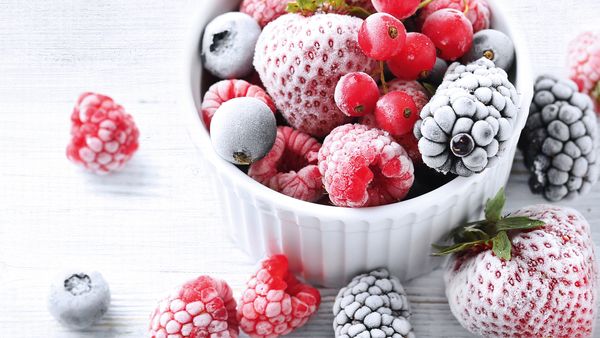
How to spot freezer burn?
Ice crystals are the most apparent sign of freezer burn. Still, changes in the colour, texture, and size of food are all reliable indicators too.
For example, freezer burnt meat may look grey, dry, and leathery, with white spots or dark patches. Vegetables and fruit with high water content tend to look shrunken and become mushy and soggy once defrosted. Freezer burnt ice cream loses its creaminess as the moisture transforms into an excess of ice crystals.
But freezers are meant to be cold and icy, right? Do ice crystals always mean that food is freezer burnt? Not necessarily, but it likely means the process has started. If the food is also discoloured, looks dry, or has become misshapen, you’re probably dealing with some freezer burn.
Of course, it’s not just at home where it pays to be a freezer burn detective. If you’re buying frozen food at the supermarket, it’s worth looking out for the signs. Any products frozen together by an excessive amount of ice crystals or with noticeable discolouration should probably be avoided.
Another way to identify freezer burn is after food has been defrosted. The shape and texture may be obviously wrong, and if you do go ahead and eat it, you’ll find the taste is not what it should be.
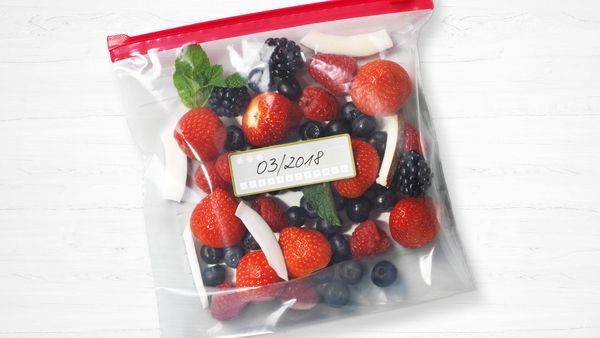
Is it safe to eat food with freezer-burn?
We’ve all been there. The fridge is empty, the cupboards are bare, and we’ve opened the freezer drawer to find a lone packet of chicken breasts that were frozen at some distant point in the past. Now what? Is freezer burn chicken on the menu, or will it make you sick?
The good news is, freezer burn is harmless and doesn’t pose a risk to your health. When food is frozen, harmful bacteria can’t grow or multiply. So providing whatever you put into your freezer was fresh to begin, and you defrost it properly, it should still be safe to eat.
However, freezer burn can leave your food tasteless, shrivelled, discoloured, and lacking in nutrients. If this doesn’t sound very appetising, that’s because it isn’t. The food, you went through all the trouble of freezing has been effectively spoiled. Technically it is safe to eat, but just because you can eat it doesn’t mean you should.
If you’re determined to go ahead, you’ll want to know how to get rid of freezer burn taste in food. Freezer burn can’t be reversed, but you can rinse off the ice crystals from your food, and once it’s properly defrosted, you can trim away any burnt areas. Some freezer burnt foods can be saved by slow cooking for eight hours or more in a generous amount of sauce and spices to rehydrate and restore flavour to your produce.
However, it’s important to remember that food is not intended to be frozen for more than a few months before being defrosted and eaten. If you’ve opened your freezer and found yourself asking the question ‘can you eat two-year-old frozen meat?’, the answer is, no!
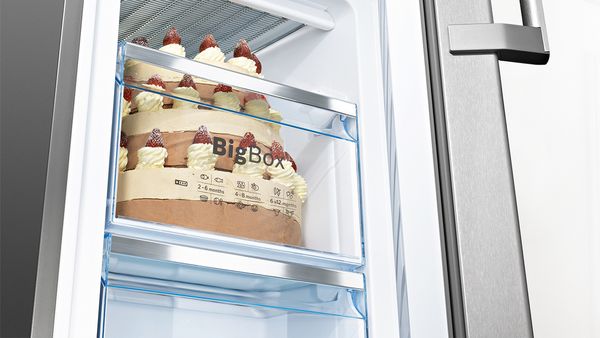
How long can food be stored in a freezer? Here's a helpful guide:
• Fish – up to 6 months
• Meat – up to 8 months
• Sausage – up to 6 months
• Vegetables, fruit – up to 12 months
• Cakes, Pastries – up to 6 months
• Ready meals – up to 6 months
How to prevent freezer burn
Once you know what freezer burn is and how it’s caused, it’s not rocket science to prevent it from happening. Most cases of freezer burn occur because food has been incorrectly stored or frozen for too long.
Let’s start with the packaging. What’s the best way to freeze food? Generally, we recommend freezer boxes with airtight lids. Vacuum sealing is also useful as it prevents air from coming in and out of the bags so moisture can’t leave the food.
To freeze vegetables, look for freezer bags with zips or closure clips. Stews and soups can be frozen in plastic containers ideally with airtight lids. One pro tip is to keep frozen portions as small as possible as they’re quicker to thaw and cook.
Soups, broths, or chopped herbs can be frozen in an ice cube tray before being transferred to a sealed freezer bag. Just make sure you remove as much air as possible from the packaging before it’s closed. Smaller containers also mean less room for air. Another general tip is to wrap freezer bags or boxes in aluminium foil for extra protection. Here are a few of our golden rules for freezing:
1. Always use the correct container when freezing food – airtight freezer bags or boxes.
2. Remember to check shop-bought packaging for openings, tears, or damage that could let excess air inside.
3. Label your containers to identify what food is inside. Write either the date it was frozen or the expiry date, so you know when it needs to be used. Use the oldest food first and try to buy and freeze food which you mean to use within 2-4 months.
4. Only open your freezer compartment when you really need to, to avoid temperature fluctuations.
5. Keep your freezer at -18°C. This is the optimum temperature for freezing food quickly, which will form smaller ice crystals and minimise the chances of freezer burn.
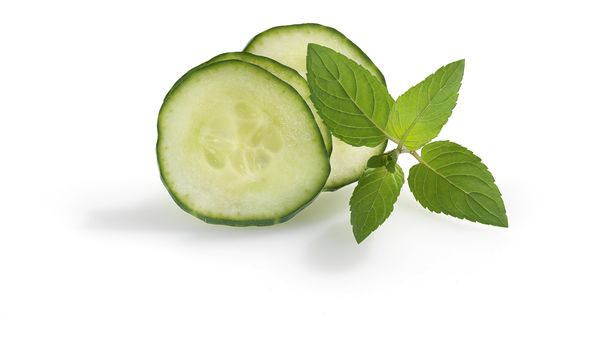
What to put in the freezer and what not to
As we mentioned, foods with high water content are susceptible to freezer burn, and there are simply some grocery items that we wouldn’t recommend freezing.
Cucumbers, like human beings, are well known for being mostly water – 95% in fact. They don’t freeze well as a result. As all that water crystallises, it destroys the structure of the vegetable, making it soggy and soft.
Strawberries and tomatoes are similar. It is possible to freeze both, but they will lose their taste and texture – and that’s practically a crime. There are some exceptions when it comes to fruits and vegetables, of course, particularly if you’re planning to turn them into a smoothie or soup. Here’s a helpful guide to foods that are suitable for freezing and foods that are not suitable – or as we like to call it, ‘To Freeze or Not To Freeze’.
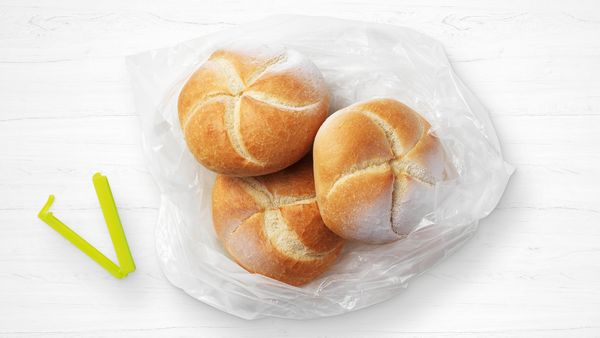
To Freeze
Baked goods, fish and seafood, meat, vegetables, fruit, herbs, eggs without shells, dairy products such as cheese and butter, ready meals and leftovers such as soups, stews, cooked meat and fish, potato dishes, soufflés and desserts.
Not to freeze
Vegetables that are usually consumed raw, like lettuce or radishes, eggs in shells, grapes, whole apples, pears and peaches, hard-boiled eggs, yoghurt, soured milk, sour cream, crème fraiche and mayonnaise.
Bonus freezing tip
While bread can be frozen, it’s best to divide it into slices (if it isn’t pre-sliced) and freeze small portions in individual bags. One question we’re regularly asked is how to freeze hamburger buns without freezer burn. Wrap burger buns individually in vacuum-sealed packs, cling film, or aluminium foil, and then place each bun in an airtight freezer container.
Make sure you date and label everything as burger buns should be used within three months. When it’s time for the buns to go into the freezer, don’t stack them up on top of each other until they are completely frozen. To defrost, unwrap each bun and place on kitchen paper, turning over halfway through. Finally, you may want to lightly warm them in the toaster, oven, or grill when it’s time to eat.
A guide to happy freezing
Most modern fridge freezers offer controls for you to set and manage the temperature range. Using this, you can program your fridge to maintain a temperature of approx. +4°C in the chiller compartment and approx. -18°C in the freezer. This keeps your frozen food well protected and cuts energy waste in the main fridge compartment.
You can connect some innovative kitchen appliances to apps such as Home Connect, allowing you to regulate the temperature of your fridge freezer and check on your food when you’re not home. Alongside this, there are also ingenious ‘no-frost’ freezers available, which cut down on the build-up of ice. Watch the video on the right to learn more about Bosch's 'no-frost' technology.
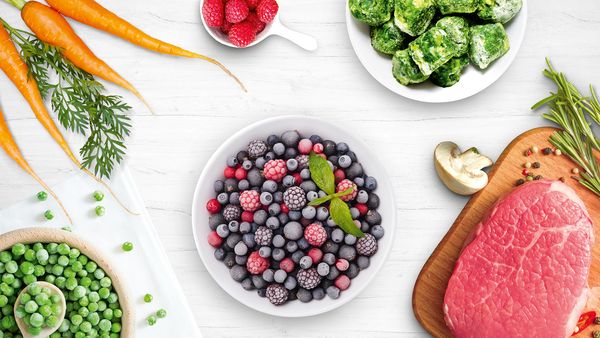
Why freezing is such a great idea
Home freezers have transformed how we store and eat food. A freezer can be an indispensable appliance in your kitchen. The list of benefits is enormous, and the downsides are almost non-existent.
Aside from freezer burn, what’s not to love about being able to safely keep fresh food for use at a later date? And as we’ve explained, freezer burn can be easily avoided once you know what to look out for, and how to store frozen food correctly.
Freezing reduces food waste and naturally ‘locks in’ vitamins, minerals, and nutrients. It saves time and money, provides ‘year-round’ access to seasonal foods, and can help you prepare meals in batches for your family. Just follow our tips to avoid freezer burn and store your food with confidence.
For more tips on staying healthy, click here.
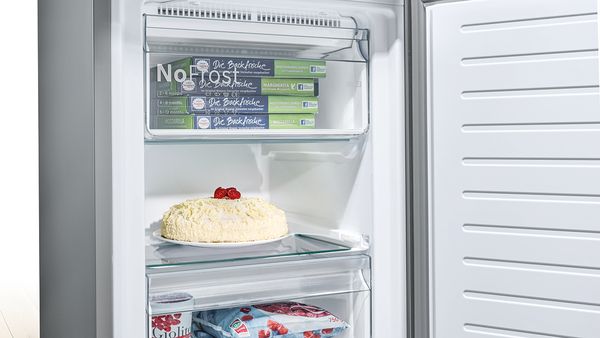
NoFrost Freezer Technology
There's no need to worry about defrosting your freezer again. Our intelligent NoFrost technology uses gentle freezing which reduces humidity and stops ice from forming, saving you time, energy, money and effort.
